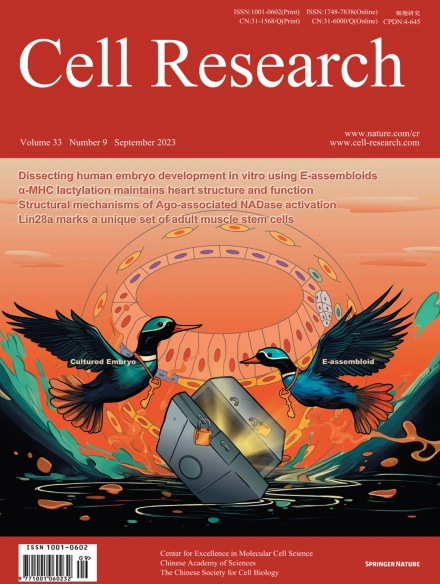
Advanced Search
Submit Manuscript
Advanced Search
Submit Manuscript
Volume 33, No 9, Sep 2023
ISSN: 1001-0602
EISSN: 1748-7838 2018
impact factor 17.848*
(Clarivate Analytics, 2019)
Volume 33 Issue 9, September 2023: 661-678 |
Dissecting peri-implantation development using cultured human embryos and embryo-like assembloids
Zongyong Ai1,2,3,†,* , Baohua Niu1,2,† , Yu Yin1,2,3,† , Lifeng Xiang4,† , Gaohui Shi1,2,† , Kui Duan1,2,3 , Sile Wang1,2,3 , Yingjie Hu1,2 , Chi Zhang1,2 , Chengting Zhang1,2,3 , Lujuan Rong1,2 , Ruize Kong4 , Tingwei Chen1,2 , Yixin Guo5 , Wanlu Liu5 , Nan Li1,2 , Shumei Zhao1,2,3 , Xiaoqing Zhu1,2,3 , Xuancheng Mai4 , Yonggang Li4 , Ze Wu4 , Yi Zheng6 , Jianping Fu6,7,8 , Weizhi Ji1,2,3,* , Tianqing Li1,2,3,*
1State Key Laboratory of Primate Biomedical Research; Institute of Primate Translational Medicine, Kunming University of Science and Technology, Kunming, Yunnan, ChinaStudies of cultured embryos have provided insights into human peri-implantation development. However, detailed knowledge of peri-implantation lineage development as well as underlying mechanisms remains obscure. Using 3D-cultured human embryos, herein we report a complete cell atlas of the early post-implantation lineages and decipher cellular composition and gene signatures of the epiblast and hypoblast derivatives. In addition, we develop an embryo-like assembloid (E-assembloid) by assembling naive hESCs and extraembryonic cells. Using human embryos and E-assembloids, we reveal that WNT, BMP and Nodal signaling pathways synergistically, but functionally differently, orchestrate human peri-implantation lineage development. Specially, we dissect mechanisms underlying extraembryonic mesoderm and extraembryonic endoderm specifications. Finally, an improved E-assembloid is developed to recapitulate the epiblast and hypoblast development and tissue architectures in the pre-gastrulation human embryo. Our findings provide insights into human peri-implantation development, and the E-assembloid offers a useful model to disentangle cellular behaviors and signaling interactions that drive human embryogenesis.
https://doi.org/10.1038/s41422-023-00846-8